From the green rolling hills of the highlands to the neo-classical monuments of Edinburgh’s old town, Scotland manages to captivate even the most cynical traveler. Culture vultures, whiskey lovers, history buffs, and Harry Potter fanatics alike will find plenty to explore in this land of kilts and bagpipes. Of course, you’re going to need to charge your devices over there, so here’s everything you need to know about purchasing a power adapter for Scotland.
US to Scotland Power Adapter: What Plug Do I Need? (2025)
Which power outlets do they use in Scotland?

Scottish power outlet
Scotland shares the same power outlet type as England, as well as with the rest of the UK. Type G is the universal standard outlet in Scotland, which has two in-line horizontal slits and one vertical slit.
Effectively, that means you can use the same adapter in the rest of the UK, negating the need to purchase another.
The outlets themselves tend to be well designed throughout the country, and almost always contain essential safety features such as an on/off switch.
What kind of power adapter do I need for Scotland?
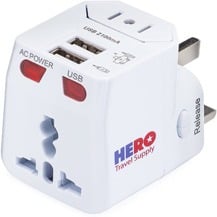
You may be asking yourself “What plug do I need for Scotland?” Because Scotland has a drastically different outlet type than the USA, you’ll certainly need to purchase a power adapter to charge your electronics. Make sure you get one that supports “Type A/B to Type G”, commonly known as US to UK.
This one pictured is the Universal Adapter we recommend. Its high-quality build and wide-ranging compatibility will have you covered in Scotland and the rest of the UK in addition to over 100 countries around the world. It also has USB ports for your phone, camera, and tablet.
What’s the electricity and power supply like in Scotland?
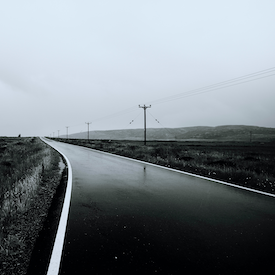
Do note, however, that Scotland has a voltage of 230 V and a frequency of 50 Hz, which is different from America (120V / 60 Hz).
Therefore, some devices cannot be charged or used in Scotland without first purchasing a power converter.
Do I need a voltage converter for Scotland?
One might assume that because Scotland runs on a different voltage and frequency to the USA, a power converter would be a must-have travel accessory. However, for most visitors that simply isn’t the case. Nowadays, almost all portable electronic devices support dual voltage and frequency (e.g. phones, tablets, laptops), which means you can charge them safely on either system. The most common portable exception is the hairdryer, a power-hungry device that often functions on a fixed 120V.
If in doubt, just read the fine print on the charger of your device. If it says “INPUT: 100-240V / 50-60 Hz”, then you’re okay to use it in Scotland.
Other Scotland Packing List Items
In addition to your US to Scotland power adapter, these items will help you pack with intention and expand the possibilities of your getaway. Also, check out our Scotland packing list for more inspiration and ideas.
-
1. Neck Wallet / Passport Pouch
Falling victim to pickpockets or muggers is a common concern for the global traveler, and a stint in Scotland is certainly not without its risks. Although rare, these kinds of crimes can and do occur, more often than not by professional thieves who target tourists as they tend to carry more cash.
To keep your passport, credit card, and cash reserves safe, the best course of action is to use a neck wallet every time you venture outside of the hotel. Once safely tucked away under your shirt, would-be thieves won’t even realize you’ve got one on you.
![hero neck wallet]()
-
2. Packing Cubes
Staying well organized on the road can be a challenge, especially for those of us who like to travel with several different outfits. Rather than stuffing them willy-nilly into a suitcase, why not invest in a set of packing cubes instead?
These handy contraptions allow you to organize your clothing by type, which makes packing and unpacking a breeze. Best of all, they’re affordable and lightweight, so you may very well never leave on a trip without them again.
![aqua packing cubes]()
-
3. Virtual Private Network (VPN)
Scotland is a relatively expensive country to visit, so you’ll want to keep a close eye on your bank account to avoid overspend. However, did you know that accessing internet banking through a public Wi-Fi network leaves you vulnerable to attack? A cybercriminal could be sitting in the same café or hotel, waiting for someone just like you to access their net banking so they can siphon out your funds.
Thankfully, you can protect your sensitive information by encrypting your traffic through a VPN. These desktop and mobile apps are more affordable and user-friendly than you think.
![how a vpn works]()
-
4. Lipstick-Sized Charger
Keeping your phone from running flat while on the road is a critical challenge every traveler has to deal with. After all, how else would you be able to locate the most authentic haggis in town or navigate your way around the side streets of Glasgow?
Thankfully, charging your device on the road has never been easier since the lip-stick-sized charger was invented. These lightweight and super portable backup batteries can easily slip into a pocket, handbag, or daypack, ensuring you never run out of juice while sightseeing again.
![Lipstick-Sized Charger]()
-
5. Windproof Travel Umbrella
Though Scotland is one of the most dramatically beautiful countries, it is also known for its frequent rain. Enjoying Scotland, even on rainy days, is part of its charm, so make sure you arrive prepared. We recommend a reliable, windproof umbrella that can keep up with the finicky Scottish weather. This compact travel umbrella also comes with a handy zip case that allows you to store your wet umbrella without getting your other belongings wet.
![travel umbrella]()
-
6. Jet Lag Relief Pills
A flight from the United States to Scotland takes seven hours, and that’s only if you’re flying direct from the east coast. Realistically, the chances are you’ll be connecting through at least one airport which could double or even triple the total travel time. Add on a time difference of at least five hours, and you’ve got cause for concern about getting jet lag on arrival. Although it’s difficult to avoid altogether, you can at least mitigate the effects by taking jet lag relief pills.
![Jet Lag Relief]()
-
7. Travel Insurance for the Scotland
The Scots enjoy unrestricted access to their National Health System, which provides high-quality healthcare to all their citizens for free. However, you’ll be obliged to pay upfront as a foreign tourist, potentially racking up an astronomical fee. Therefore, it’s wise to protect yourself from unexpected medical costs by taking out a suitable travel insurance policy. We use TravelInsurance.com to compare policies from all of the top companies in order to find the best option for our family and travel plans.
![Travel Insurance for the Scotland]()
Other FAQs about traveling in Scotland
-
1. When to travel to Scotland?
The best time to visit Scotland depends on what kind of weather you like. It’s hottest during the peak summer season (July-August), which attracts hordes of tourists as well as more frequent rain showers.
Many travelers like visiting during the spring (May to Mid-June) when the weather is mild and fewer tourists are crowding the country’s main attractions.
Another exciting time to visit is during the fall (September to Mid-November), as Scotland is renowned for its colorful foliage. Few visitors choose to vacation during winter as the frigid weather causes many sites to close down and snowfall can inhibit passage through the highlands. Be sure to check current Scotland travel advisories before you go.
-
2. What is the weather like in Scotland?
Scotland is famed the world over for its overcast skies and frequent rainfall, so don’t come expecting to work on your tan. In fact, Scotland is home to the UK’s wettest town, Glen Etive, which receives a whopping 3.3 meters of rain per year. The wettest month is September, although downpours are frequent throughout the year. Expect to see higher than average rainfall in the peak summer months.
Note that the weather tends to be unpredictable and variable – a true “four seasons in one day” effect. Nevertheless, Scotland’s perpetually grey skies and drizzle add a certain character and charm to the place.
-
3. What to do in Edinburgh?
If possible, aim to visit Edinburgh during its world-famous Fringe Festival. At this epic 25-day event, the entire city comes alive as some 50,000 artists put on impromptu theatrical performances, knee-slapping stand-up comedy shows, and an endless array of traditional and contemporary gigs. If not, then worry not for Scotland’s captivating capital comes packed with exciting attractions to explore. The primary point of interest is, of course, the grand Edinburgh Castle, an imposing medieval fortress that towers over the cityscape.
Elsewhere in the city, gorgeous Gothic and Medieval architecture abound, creating an open-air museum of sorts that’s a pleasure to navigate on foot. Indoors, the Museum of Scotland is worth a look, while the Dean Gallery and National Gallery are a hit with the artsy crowd. Of course, no visit to Edinburgh would be complete without sampling its finest export. An array of lively whiskey bars and distilleries see a roaring trade right throughout the week, many of which feature traditional music and dance to enhance the merrymaking.
-
4. What to do in Scotland?
Outside of Edinburgh, Scotland is awash with exciting attractions, especially for those who cherish remote wilderness regions. For breathtakingly beautiful islands, some of which have an almost Caribbean-esque appeal (sans the heat and humidity), head to the Inner and Outer Hebrides. Much of this rugged archipelago is uninhabited, save for a selection of wildlife including stags, eagles, and otters. At the very least, the Isle of Skye is a must.
Nature lovers would relish a hike around the rocky crags of the Cairngorms National Park. Likewise, the valleys and plateaus of the highlands are an adventurer’s playground, with quaint settlements such as Fort William and Glencoe adding a distinct cultural appeal.
-
5. How to get around in Scotland?
With a relatively small landmass, getting around in Scotland is often done overland. Although expensive, the national rail system connects seamlessly with the rest of the United Kingdom and offers awe-inspiring views of the country’s remote landscapes. For a cheaper option, intercity buses are modern, comfortable, and frequent. Booking ahead through budget carriers such as Megabus can yield significant savings.




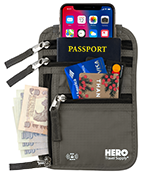



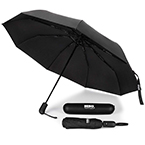
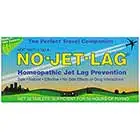

 The best time to visit Scotland depends on what kind of weather you like. It’s hottest during the peak summer season (July-August), which attracts hordes of tourists as well as more frequent rain showers.
The best time to visit Scotland depends on what kind of weather you like. It’s hottest during the peak summer season (July-August), which attracts hordes of tourists as well as more frequent rain showers.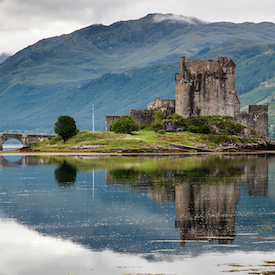 Outside of Edinburgh, Scotland is awash with exciting attractions, especially for those who cherish remote wilderness regions. For breathtakingly beautiful islands, some of which have an almost Caribbean-esque appeal (sans the heat and humidity), head to the Inner and Outer Hebrides. Much of this rugged archipelago is uninhabited, save for a selection of wildlife including stags, eagles, and otters. At the very least, the Isle of Skye is a must.
Outside of Edinburgh, Scotland is awash with exciting attractions, especially for those who cherish remote wilderness regions. For breathtakingly beautiful islands, some of which have an almost Caribbean-esque appeal (sans the heat and humidity), head to the Inner and Outer Hebrides. Much of this rugged archipelago is uninhabited, save for a selection of wildlife including stags, eagles, and otters. At the very least, the Isle of Skye is a must. With a relatively small landmass, getting around in Scotland is often done overland. Although expensive, the national rail system connects seamlessly with the rest of the United Kingdom and offers awe-inspiring views of the country’s remote landscapes. For a cheaper option, intercity buses are modern, comfortable, and frequent. Booking ahead through budget carriers such as Megabus can yield significant savings.
With a relatively small landmass, getting around in Scotland is often done overland. Although expensive, the national rail system connects seamlessly with the rest of the United Kingdom and offers awe-inspiring views of the country’s remote landscapes. For a cheaper option, intercity buses are modern, comfortable, and frequent. Booking ahead through budget carriers such as Megabus can yield significant savings.